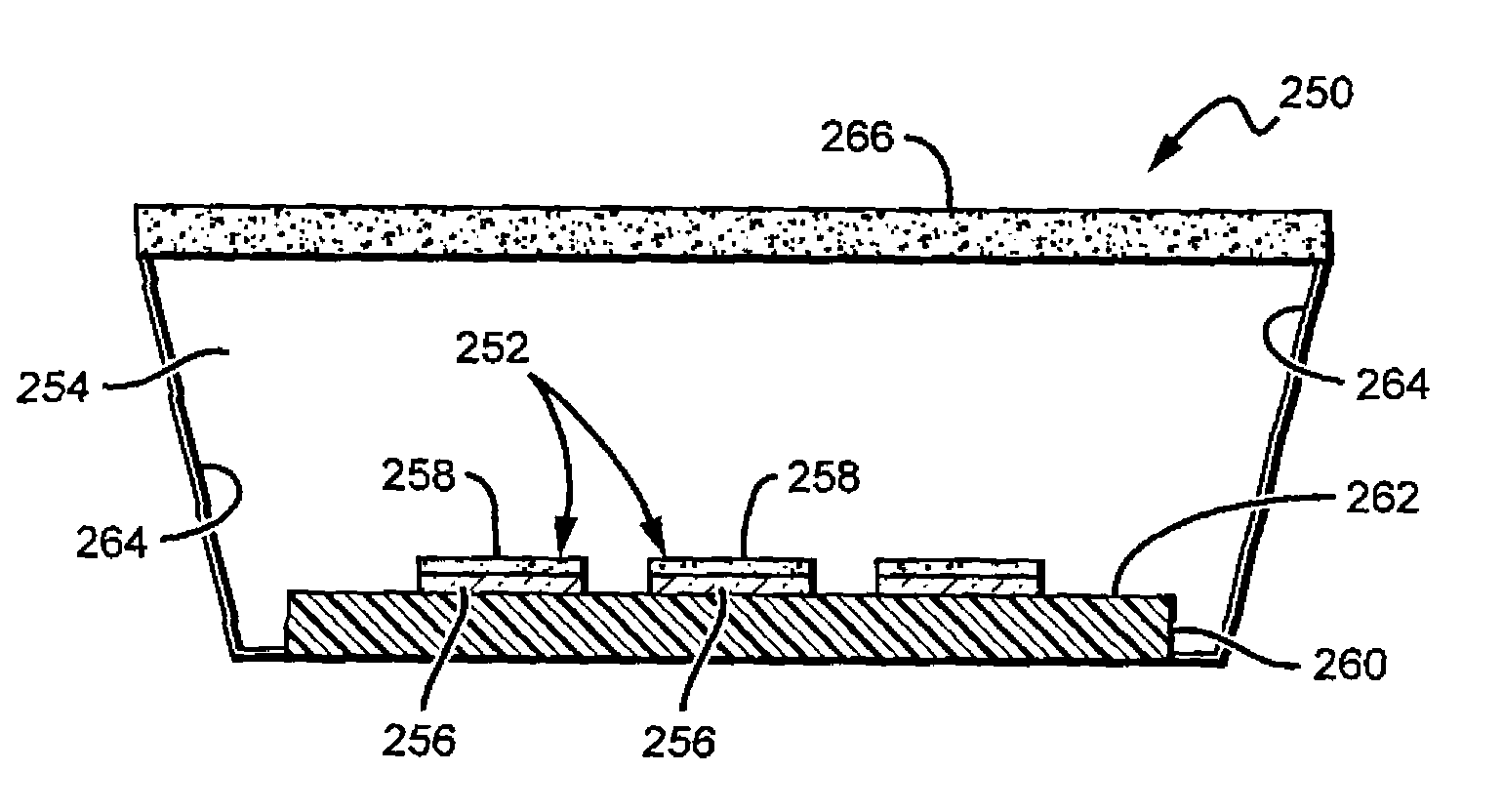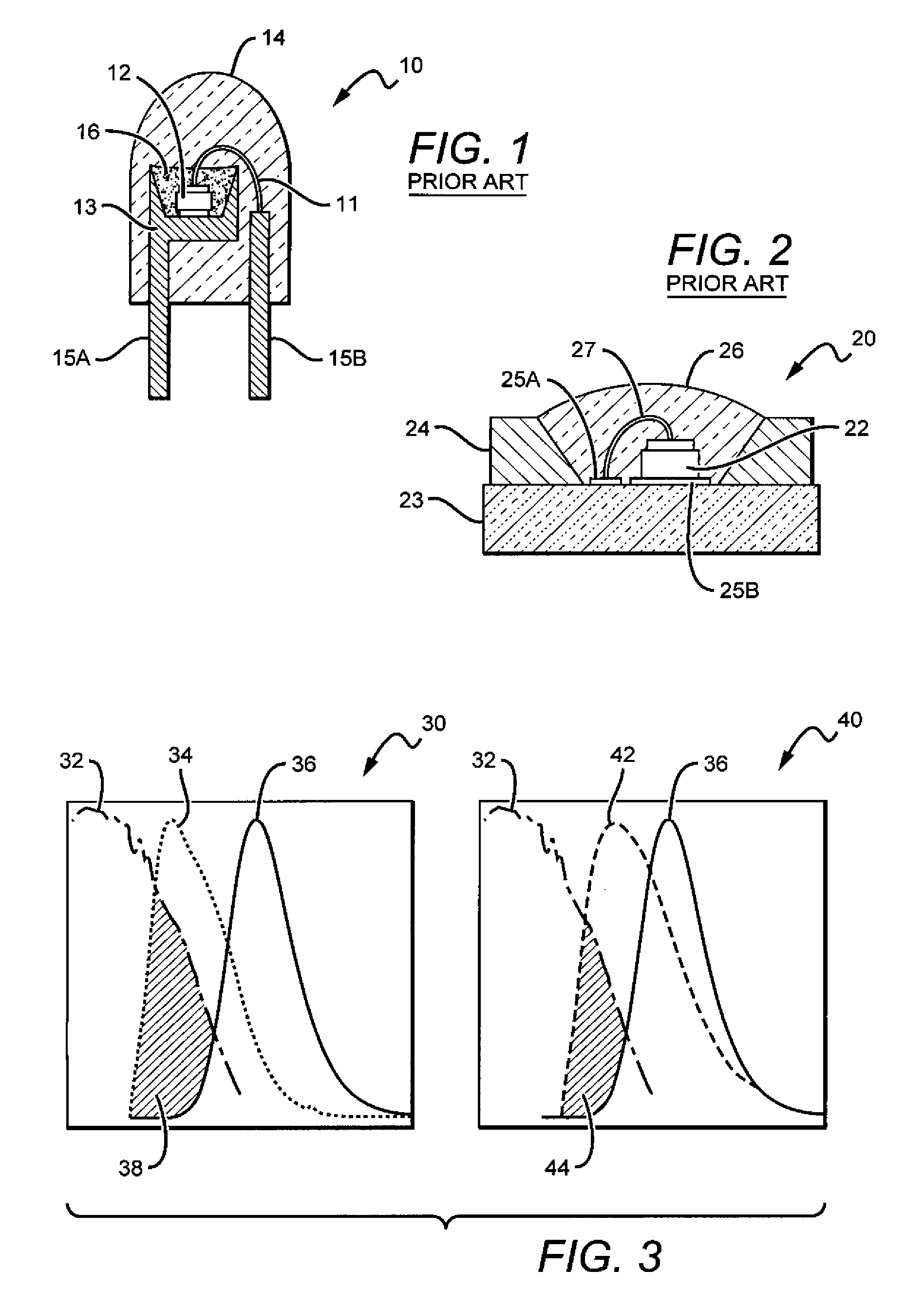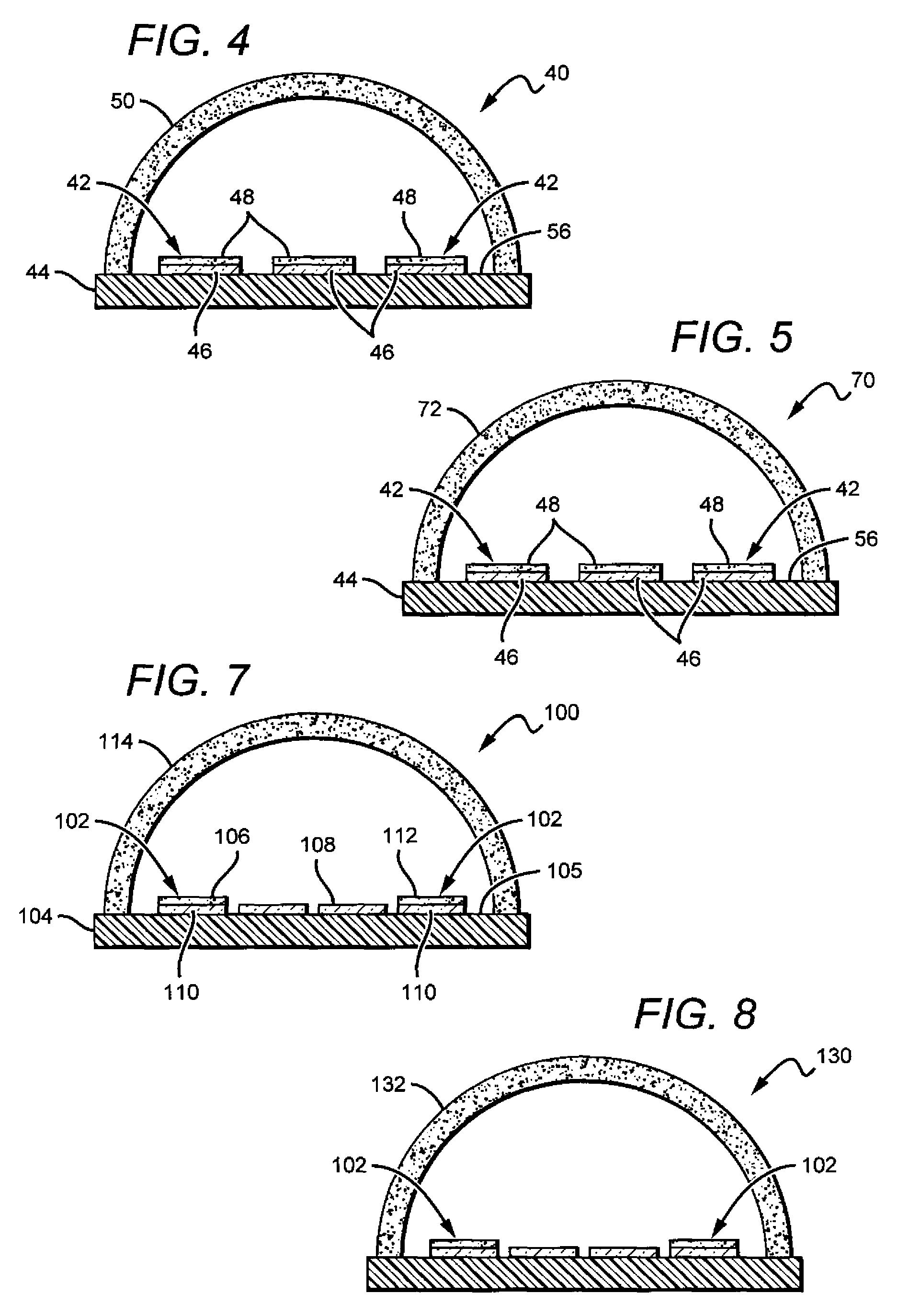Enhanced color rendering index emitter through phosphor separation
a color rendering index and emitter technology, applied in the field of solid-state lamps and bulbs, can solve the problems of reducing the efficiency of light sources, so as to reduce the likelihood, minimize the risk of re-absorption, and minimize the loss of cri and efficiency.
- Summary
- Abstract
- Description
- Claims
- Application Information
AI Technical Summary
Benefits of technology
Problems solved by technology
Method used
Image
Examples
Embodiment Construction
[0042]The present invention is directed to different embodiments of solid state lamps, bulbs and LED packages utilizing multiple conversion materials to produce the desired overall emission characteristics, with the conversion materials separated to reduce the impact of emission and excitation spectrum overlap. Some embodiments of the present invention are directed to solid state lamps arranged to produce white light with a warm color temperature by utilizing two separate phosphor components in a way that eliminates or reduces the re-absorption (interaction) between the two component phosphors. This can result in emission of warm white light with a CRI that is significantly higher than those arrangements where re-absorption is not addressed, such as where the different phosphors are mixed.
[0043]The re-absorption is minimized by providing physical separation between the two phosphors to minimize interaction or crosstalk between the two. That is, the separation reduces the amount of l...
PUM
| Property | Measurement | Unit |
|---|---|---|
| reflectivity | aaaaa | aaaaa |
| CRI | aaaaa | aaaaa |
| CRI | aaaaa | aaaaa |
Abstract
Description
Claims
Application Information
 Login to View More
Login to View More - R&D
- Intellectual Property
- Life Sciences
- Materials
- Tech Scout
- Unparalleled Data Quality
- Higher Quality Content
- 60% Fewer Hallucinations
Browse by: Latest US Patents, China's latest patents, Technical Efficacy Thesaurus, Application Domain, Technology Topic, Popular Technical Reports.
© 2025 PatSnap. All rights reserved.Legal|Privacy policy|Modern Slavery Act Transparency Statement|Sitemap|About US| Contact US: help@patsnap.com



